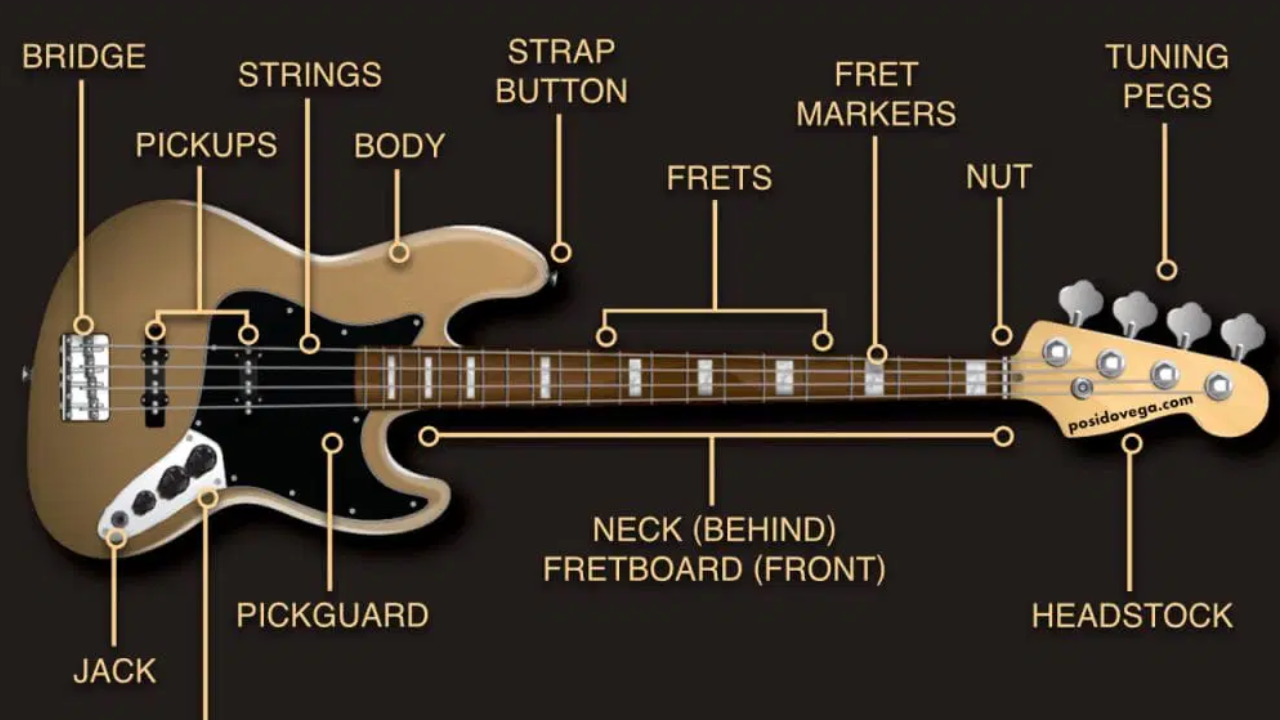The bass guitar is the heartbeat of music. While solos shine, it’s the groove and foundational movement—often crafted from bass guitar scales—that gives a song its soul. Ever wondered how legendary players craft iconic bass lines or tasteful solos? The answer lies in their mastery of scales.
Learning bass guitar scales isn’t just about memorizing patterns—it’s your gateway to:
- Fluid Technique: Navigate the neck with ease.
- Creative Freedom: Improvise lines and compose original grooves.
- Theoretical Insight: Understand why certain notes work.
- Stronger Groove: Meld rhythm and harmony seamlessly.
- Confidence: Feel prepared in any musical setting.
This guide serves as your comprehensive roadmap—from essential bass guitar scales types to practical applications across genres.
What Are Bass Guitar Scales? (Your Sonic Foundation)
Scales are ordered sequences of notes by interval. Think of them as color palettes for musical expression.
Why Are Scales Crucial?
- Melodic Tools: Provide note choices for lines, fills, and solos.
- Harmonic Clarity: Help align with chords being played.
- Fretboard Fluency: Build visual and tactile understanding of the neck.
- Ear Training: Reinforce pitch recognition and interval awareness.
- Technique Building: Improve finger strength and timing.
Fretboard Navigation Tip
Each fret is a half-step. For example, the G Major scale on the E string (3rd fret) follows:
W-W-H-W-W-W-H
G → A → B → C → D → E → F# → G
Learn this pattern and you can transpose it to any key.
Core Scale Types for Bass Players
Major Scale
- Sound: Bright, stable.
- Formula: W-W-H-W-W-W-H
- Use: Pop, rock, country.
Natural Minor Scale (Aeolian)
- Sound: Mellow, melancholic.
- Formula: W-H-W-W-H-W-W
- Use: Rock, blues, minor-key ballads.
Harmonic Minor
- Sound: Dramatic, exotic.
- Formula: W-H-W-W-H-W+H-H
- Use: Metal, classical phrases.
Melodic Minor
- Sound: Smooth, jazzy.
- Formula: W-H-W-W-W-W-H (ascending)
- Use: Jazz, fusion, modern funk.
Pentatonic Scales (Major/Minor)
- Minor Pentatonic Formula: 1–b3–4–5–b7
- Major Pentatonic Formula: 1–2–3–5–6
- Use: Blues, rock, soul, funk, country.
🎸 Start with Minor Pentatonic—it’s the go-to for beginners and pros alike.
Modes: Colors of the Major Scale
- Dorian: Minor feel, major 6th.
- Mixolydian: Major feel, flat 7th.
- Phrygian, Lydian, Locrian: Used for specific genre flavors.
Practice Strategies (Build Muscle Memory & Application)
Effective Practice Habits
- Start Slow: Use a metronome (40–60 BPM).
- Use Proper Fingering: One finger per fret when possible.
- Vary Your Practice Patterns:
- Ascending/Descending
- Thirds, fourths, skips
- Sequences
- Ascending/Descending
Expand Your Fretboard Mastery
- Practice in multiple positions
- Cycle through all 12 keys
- Connect patterns horizontally
Play With Music
Use backing tracks to:
- Reinforce scale shapes in context
- Develop rhythmic placement
- Experiment with fills and motifs
Applying Bass Guitar Scales Musically
Knowing bass guitar scales is just the beginning—application creates real artistry.
Building Basslines
- Roots & Fifths: Basic but effective.
- Walking Bass: Connect chord tones through scale motion.
- Funk/Soul: Use Minor Pentatonic with chromaticism.
Soloing & Improvisation
- Identify the chord and key
- Target chord tones on strong beats
- Use repetition and variation
- Improvise within context (e.g., Minor Pentatonic over blues)
Genre-Specific Use
- Blues: Minor Pentatonic, Mixolydian
- Rock: Minor/major pentatonic, Dorian
- Jazz: Melodic Minor, Modes
- Metal: Harmonic Minor, Phrygian
- Funk: Dorian, chromatic fragments
Common Mistakes to Avoid
- Mechanical Practice Without Context → Use tracks and real songs.
- Speed Over Precision → Accuracy builds clean speed.
- Ignoring Rhythm → Groove is king.
- Only One Pattern → Explore the full neck.
- Neglecting Ear Training → Sing what you play.
- Disconnect Between Scales and Chords → Study chord-scale theory.
A Weekly Practice Plan
| Day | Focus |
| 1 | Major scales + Modes |
| 2 | Minor scales + Pentatonics |
| 3 | Pentatonic & Blues scales |
| 4 | Modes + Improvisation |
| 5 | Review + Jam Tracks |
| 6/7 | Rest, Listen, Explore |
Pro Tip: Keep a journal. Track progress and set weekly goals (e.g., “Clean G Major at 90 BPM”).
Tools & Resources
- Books: Bass Scale Finder, Building Walking Bass Lines
- Apps: iReal Pro, Tenuto, Scale Practice apps
- Websites: StudyBass, TalkingBass, Scott’s Bass Lessons
- Communities: TalkBass, Reddit r/Bass
- Teachers: Personalized guidance is invaluable
8. Going Beyond: Advanced Scale Work
- Chord–Scale Relationships
- Modal Interchange
- Scale Substitutions for Color
- Transcription & Ear Training
- Guide Tones in Improvisation
Conclusion: Begin Your Scale Journey
Mastering bass guitar scales opens doors to expression, confidence, and creativity. It’s a long-term journey with huge rewards. Focus on:
- Consistency
- Musical Context
- Deep Listening
- Self-Kindness
Start simple: pick the Minor Pentatonic, jam with a track, and let the music guide you.
FAQs About Bass Guitar Scales
Q: What are the best scales to learn first?
A: Start with the Minor Pentatonic, then Major, Major Pentatonic, and Natural Minor.
Q: How often should I practice?
A: 15–30 minutes a day, focusing on application with tracks.
Q: What’s the difference between scales and modes?
A: Modes are derived from scales by starting on different degrees, offering distinct sounds.
Q: Is music theory necessary?
A: Not strictly—but it supercharges your learning and application. Know the basics.









